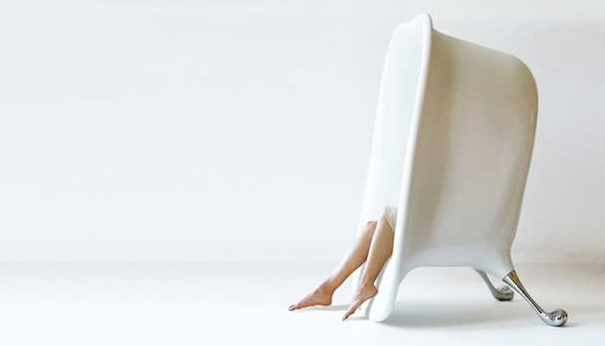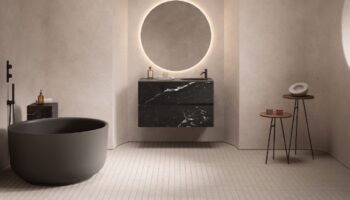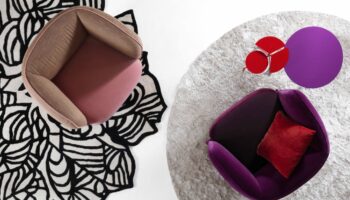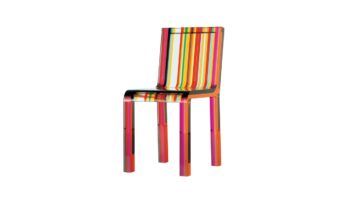Seatub: Hold the Water
The February 2009 edition of UK Designer Magazine included a peculiar hybrid by London-based designer Baek-Ki Kim. Part bathtub, part lounge chair, the Seatub is a tub-inspired chair. Made of carbon fiber, high-gloss lacquer with chrome-coated claw feet, Kim's Seatub means to take the relaxation aspect of bathing and relocate it in a tub-shaped chair.
Seatub. Designed by Baek-Ki Kim.
Kim explains that sitting is instinctively a relaxing behavior-as is bathing, which is "not only a way to clean," but also a way to engage in "meditation, refreshment, and speculation." The bathtub, as an object, incites peace and pensiveness: it is "a medium" that presents "spatiotemporal scope for mental conduct." Why, then, should we not use the bathtub as a purposeful place to sit and merely relax? In fact, the lure of the bathtub has affected more people than just Baek-Ki Kim. For example, take the main character of Toussaint's novel The Bathroom, who decides to escape humanity by living in the bathtub of his Parisian apartment. There is Kim's fictional alter ego. So, Seatub fulfills an odd desire to occupy a cozy space.


And the Seatub's high back does create a sort of porcelain nest (not really porcelain, however). What Kim has done is develop a chair based on the iconic qualities of a bathtub-a chair which, in fact, does emit a sense of calm and privacy. His experiment in "symbiosis," Seatub, is a lounge chair that "experiments to shift a function." Kim refers to the design as a "new creature"-and indeed it is. Seatub should succeed in taking the bath out of the bathroom. The clean material, high back, and white gloss of Seatub make it ideal for Delano's sweeping lobby in Miami Beach, but its archaic clawed feet also suit a more industrial chic-imagine Seatub in San Francisco's Hotel Diva. Put it in a corner of your study and check out. Seatub should come with a "Do Not Disturb" sign, but there's no place to hang it. No need: the piece itself mandates tranquility.




Leave a Reply